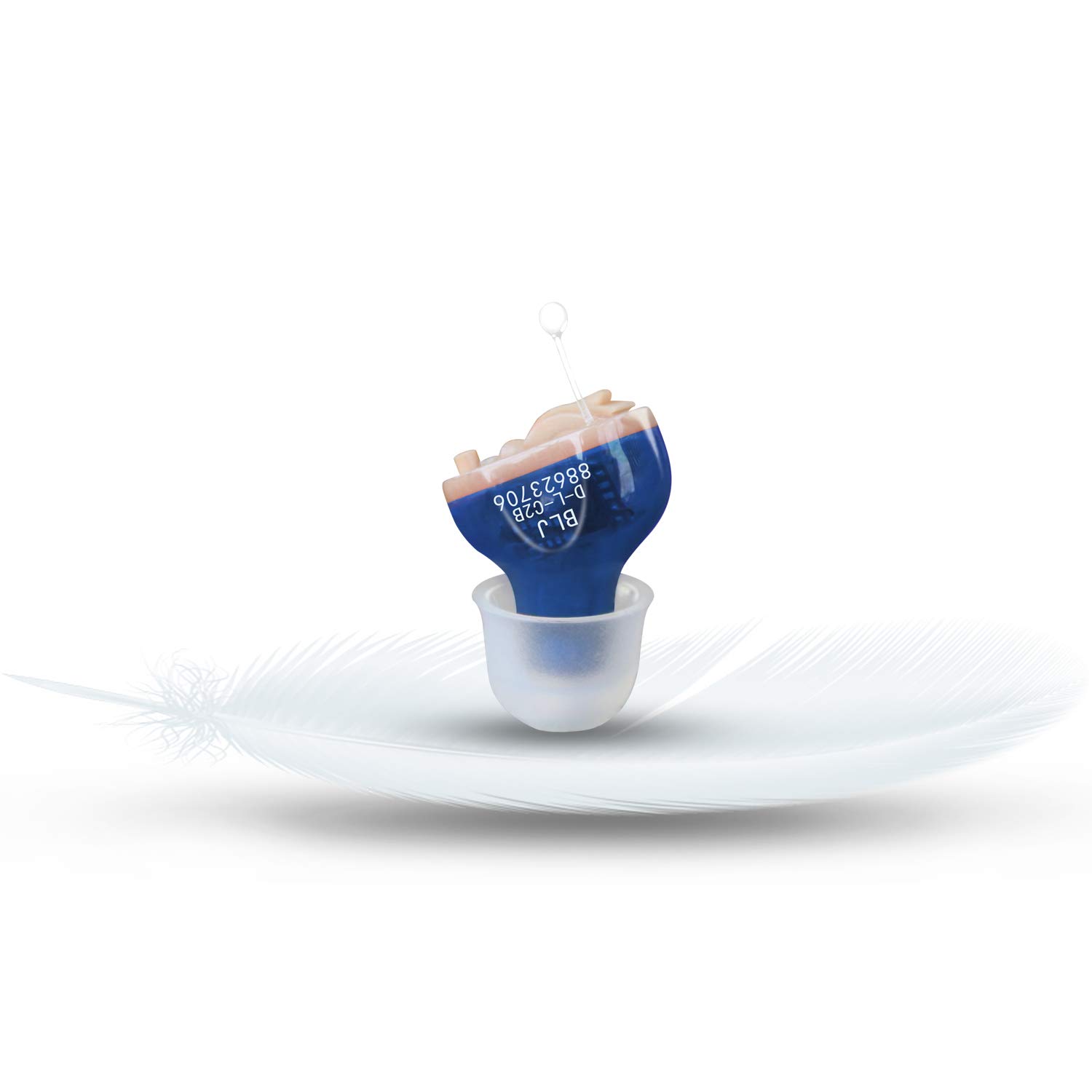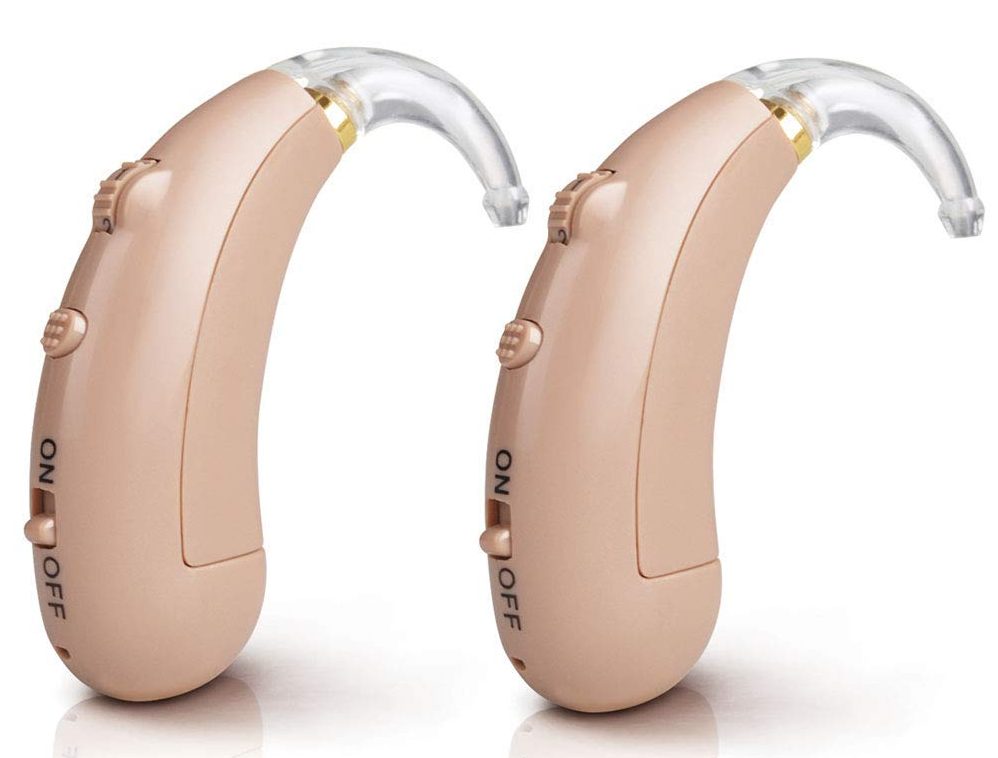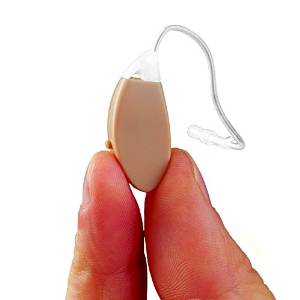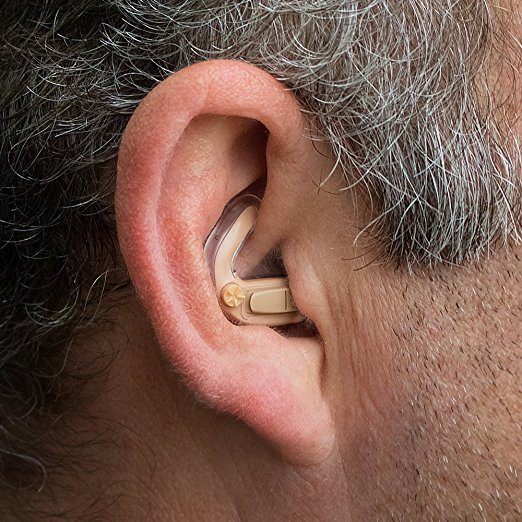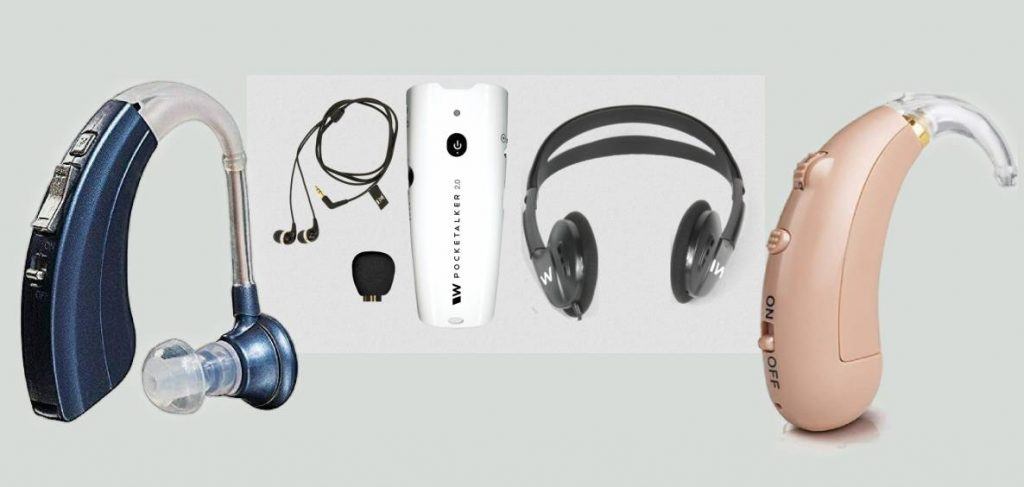
Hearing amplifiers are helpful for people with mild to moderate hearing loss who need a bit of assistance when watching TV, during conversations, or when in a noisy situation like a restaurant.
The best amplifiers can often work well as an inexpensive, over-the-counter alternative to a hearing aid that you can get without a prescription.
There are many different styles of personal sound devices to choose from, including those that look and function just like high-priced aids or hand-held designs that come with headphones that are easy to operate and use. Whatever your sound amplification needs, we have compiled a list of the best-selling and best quality amplifiers that are available.
In this post:
- See our picks for the best over-the-counter personal sound amplification devices
- Learn about the different type of designs and key features to look for
- We also cover what you need to know before you buy
The 8 Best Hearing Amplifiers:
| Name | Type | Price | |
|---|---|---|---|
 | Pocketalker Ultra 2.0 | Latest model of the wildly popular Pocketalker. Great for those who have hand dexterity issues and can't work smaller devices. | Check Pricing |
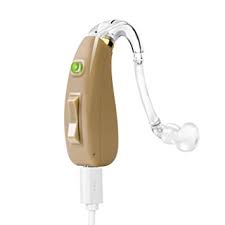 | Banglijian Hearing Amplifier Rechargeable Ziv-201A | Good quality rechargeable behind the ear style | Check Pricing |
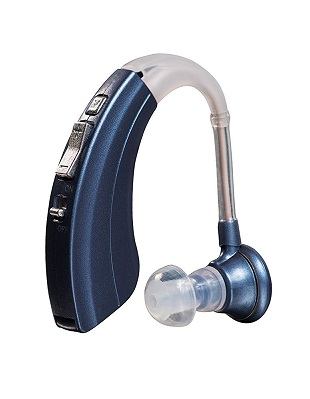 | Britzgo BHA-220 | Very popular budget behind the ear design | Check Pricing |
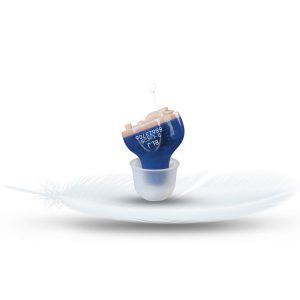 | BLJ Hearing Amplifier Sound Amplifier | Newer moderately priced option in-canal style that works well and is well reviewed. | Check Pricing |
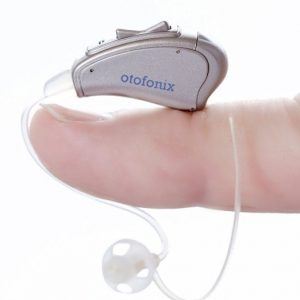 | Otofonix Elite Personal Sound Amplifier | Popular BTE style | Check Pricing |
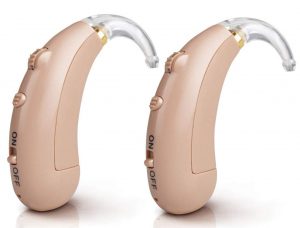 | Coniler Hearing Amplifier | Solid. moderately priced behind the ear model. | Check Pricing |
Hearing amplifiers, also known as personal sound amplifier products (PSAP), are wearable electronic products that are intended to amplify sounds for people who have mild to moderate hearing loss and need extra amplification.
PSAPs are not considered hearing aids, although a large number of people use personal sound options as a much cheaper alternative to high-priced professional options.
There is a wide range of different models made by various manufacturers that use different types of technology and personalization to enhance the sounds around you.
You can use these types of devices for television watching, to make out conversations better, while hunting, and while at a movie or church, etc. They are often designed to look like hearing aids, but you can also buy models that are hand-held designs with headphones.
The following are the best hearing amplifiers on the market currently:
- Comfortable for everyone
- Adjustable tone and balance control
- Lightweight
- Good value for the money
Cons:
- Some background noise
Why we like it:
The Pockettalker 2.0 is an excellent option for situations like nursing homes or if people do not like to wear in-ear amplifiers.
- Rechargeable
- Affordable
- Easy to use
Cons:
- The background noise reduction feature doesn’t work as expected for some users.
Why we like it:
Since batteries for hearing aids and amplifiers can be expensive it is nice to have a rechargeable option to cut down on costs.
- It has four memory settings for different hearing environments ( Normal, Noisy, Treble, and Power).
- Easily adjustable volume settings
- Small and comfortable to wear
- Ready to use right out of the box
Cons:
- Some users find batteries difficult to change
Why we like it:
The LAIWEN design is a new model that has excellent sound performance and is one of the few good quality in-canal models that is available. It is growing in popularity quickly as a lot of people with loss have had success using it.
It is a high-quality product that can help people with mild to moderate loss hear better in various situations at an affordable price.
It offers a lot of the same types of features and components that some of the top brand traditional hearing aids do, including having four different amplification programs that are suitable for a wide range of amplification needs.
- Affordable
- In-canal design
- Discrete
Cons:
- Volume difficult to change quickly
Why we like it:
It is difficult to find in canal amplifiers so it is nice to have an affordable option that is also discrete.
One of the cheapest, yet most effective products for the price is the Britzgo BHA-220. It sells for around $60, but many people find that they are getting pretty good improvement in how they can comprehend sound from the Britzgo BHA-220.
The features are pretty basic: 4 different frequency modes, an on/off button, and volume control, and you can wear it in either ear. The Britzgo BHA-220 is lightweight, and most people find it comfortable to wear.
- Inexpensive
- Great battery life (500 + hours)
- 4 different frequency modes
- Can be worn in either ear
Cons:
- Doesn’t have noise-canceling technology
Why we like it:
This is one of the best performing amplifiers in the budget category. For the price you are getting great value.
- Difficult to get in-canal style
- High-quality digital processor
- Layered noise reduction.
Cons:
- Very small so not appropriate for everyone
Why we like it:
It is moderately priced, small, and comfy for most users to wear. It is easy to set up and offers plenty of volume levels that are easy to change. It comes nicely packaged with a compact carrying case and several different options for ear sizes.
- It comes with tubes that you cut to help get the best fit for your ear size. You also get several earbuds that you can test out to get the most reliable seal on the device.
Cons:
- Some people find the tubes a little bit difficult to work with when they have to cut them for sizing.
Why we like it:
The Coniler is an excellent rechargeable option in this price range (less than $50 per ear). Most users find the device to work well for mild to moderate age-related hearing loss.
How Is an Amplifier Different than a Hearing Aid?
There is a lot of confusion over what makes a make a personal sound amplifier different from a hearing aid. Professional aids and the behind-the-ear and in-ear styles of amplifiers are both small, electronic devices that fit into the ear and amplify sound.
They both use similar technology, although the FDA does not regulate PSAPs in the same way that professional designs are, and so do not require a medical prescription or a professional fitting. Amplifiers are much less expensive than options you get from a specialist; they range in price from $40 to $400, while aids can range in price from $1000 to $7000.
The quality of higher-end models of the PSAPs is pretty similar to some of the lower-cost aids that are available. Currently, PSAPs are not regulated by the FDA in the same way that hearing aids are.
Generally, amplifiers do not perform as well as more expensive professional options. These devices are often marketed to people who aren’t ready to get a high-priced aid, or who have trouble understanding what is being said in particular situations. They can also be useful for people who might be without their aids temporarily or for people who are unable to use a hearing aid.
Hearing professionals are generally very critical of personal sound devices, but that may start to change as a new generation of technologically advanced PSAP’s becomes available. Some of these new sound amplification products use the latest wireless technology and come with software that lets consumers program the product themselves by downloading an app that enables you to customize the sound to your personal preference.
The quality of amplifiers varies quite a bit, so if you are interested in one of these devices as an alternative to an aid, you may want to skip some of the low-end products. Also, be sure that whatever product you are looking at has a good warranty and excellent customer support.
Features to Look For
Before you purchase a personal sound device, you should know about the features that you will need. Some of the higher-cost products have technology similar to that found in expensive aids like multiple channels for different noise environments, noise cancellation features, the ability to adjust audio signals, and directional microphones.
If you are looking for something to help you watch TV, or help with conversations, most basic PSAP will give you what you need, for lower-end models pay attention to whether it uses a charger or batteries. If it is rechargeable, find out how long the charge will last. If it takes batteries, remember to keep the cost of the batteries in mind when thinking about the budget.
For serious sound quality, you will want to look at some of the latest advances in technology from companies like Williams Sound, Bellman, and Symfon, or some of the newer startups like iHear Max. These companies are continually updating their technology and offer some of the latest and greatest features on the market.
Types
Most amplifiers are very similar in appearance to hearing aids that fit behind the lobe with a piece that is placed into the canal. You can also get models that are hand-held with a microphone and headphones. When you are considering the different design styles, think about how often you are wearing it, when you will be wearing it, and how inconspicuous you want it to be.
You may be wearing the device all day and forget that you are wearing it. Or you might want it only for noisy situations where you need a bit of help understanding what others are saying. Since most people use amplifiers as a substitute for an expensive aid, the typical behind-the-ear style is the most common and has the most number of models to choose from.
Behind-the-Ear
Price Range: $10-$400
The most popular type is the behind-the-ear style. There is a vast range of these styles available from very cheap (less than $10) to styles that use the latest technology that can cost hundreds of dollars.
As with most things, you get what you pay for, so the models that are less than $50 don’t tend to work very well. If you are looking at a lower-cost model, pay close attention to the reviews, as a lot of the cheaper models are of inferior quality.
PROS: Extremely portable and often small enough to be hidden behind the ear; minimal investment for budget models.
CONS: Sound quality varies according to cost.
Key Features: Portability, inconspicuous.
Top Picks: See: Best Behind-the-Ear Personal Amplifiers.
In the Ear
Price Range $20-$375
An in-the-ear design means that it is a design that you put directly into your ear. For the most part, in-ear models are hard to see and can give you the right level of amplification for a reasonable price while also having the same general features as the over the lobe style. There aren’t as many in-ear models to choose from as behind the ear.
PROS: It is more comfortable for people who wear glasses.
CONS: They may be uncomfortable or may not fit in some ears.
Top Picks: Best In-the-Ear Amplifiers
Hand-held Units with Microphone and Listening Headphones
Body-worn or hand-held models like the very popular Williams Sound Pocketalker can help you understand what other people are saying in one-on-one conversations or small group settings. Most of these sound devices come with earphones or headphones or have a neck loop for hearing aid users to listen through.
PROS: Extremely portable and often small enough to fit into a pocket, easy to take on and off the earphones when needed.
CONS: Not as discreet as some of the behind the ear models
Key Features: External volume & tone controls, removable microphone with an extension cord.
Key Accessories: Swivel Microphone, TV listening cord, belt clip.
Top Picks: See the Best Hand-Held Personal Amplifiers.
Price
Personal sound designs come in a wide range of prices from under $10 up to $400. The cost of a professional aid can run from $1000 to $6000 per ear, so amplifiers (even ones that cost $400) look like a bargain in comparison.
Under $50
Inexpensive options such as the SuperEar 5000 will give you amplification, minimize background noise, and give you the ability to wear it discreetly for under $50. You should be wary of the quality and usefulness of the products that fall under $50.
The adage ‘you get what you pay’ for is particularly relevant for these low-cost devices, so be aware you may end up with something that doesn’t work well. If you do purchase any of these models, make sure it comes with a money-back guarantee.
$50 to $100
The overall quality of the products that fall into this price category is slightly better than the lower-priced models. The $60 Britzgo BHA-220 gives adjustable sound and multiple earpieces to try to get the right fit.
There are a lot of models in this price range that offer digital voice recognition with decent battery life as well as a money-back guarantee. Features can be a toss-up in this price category, so you will have to do more research than with others before buying.
$100 to $200
The William Sound Pocketalker falls into this price range, giving you a lot of great features like sound amplification and reduced background noise. It has a lightweight design for portability and is easy to use. It also has a reliable volume control that lets you adjust your listening to different situations. A behind-the-ear model that has been selling well over the last year that is worth taking a look at is the Banglijian Ziv-201. It is a rechargeable model that costs just over $100.
$200 and Up
In this price bracket, options range from behind-the-ear models life the Otofonix to the to in-canal models such as Etymotic Research Bean ($375 and more), that amplify hard-to-understand sounds, including soft voices, while lowering the volume on loud noises. Sound World Solutions CS50 is also in this price range. The choices in this price range are as close as you are going to get to a professional aid without visiting an audiologist.
Where to Buy
Lower end behind-the-ear models can easily be bought over-the-counter at your local drug store or somewhere like Walmart. Best Buy sells a few speakers like the Williams Sound Pocketalkers. You can also get all of these products listed above through online retailers like Amazon, or in some cases, directly from the manufacturer.
FAQ
How do they work with cell phones?
Most amplifiers work in the same way with a cell phone as a hearing aid. Generally, you may have to turn the volume up or down, but you shouldn’t get any feedback or static.
I have small/large ears, will a personal sound amplifier be able to fit me?
Most of the mid to high-quality amplifying designs will offer different sizes of earpieces to ensure that you get the right fit. The right fit plays a huge part in how the product will work, so the device must fit properly. If you don’t like the idea of having your canal blocked, you may want to consider some of the hand-held designs that let you wear headphones.
How long can you wear the BTE and in-canal devices?
The length of time varies between different products; it is generally recommended that you don’t wear amplifiers for longer than 6-8 hours, although many users wear them from when they get up to when they go to bed.
Do you have to buy a pair for both ears, or can you just buy one for one ear?
It depends on what your hearing loss situation is. If you cannot hear at all out of one ear and only a little bit out of the other, then you can purchase one for the ear that you can listen from. If you have loss in both ears, then you should get a pair. If you have one ear that you can hear well out of and one ear that has some loss, you should be fine just getting one amplifier for the ear with the loss.
Can you customize the sound to hear high or low-frequency sounds?
For budget models, you won’t be able to change the setting between different frequencies. If you look at some of the higher-priced models, they do offer a range of settings (often 4) between low and high, where you need different frequencies.
Can you wear them behind the ear designs with glasses?
You can usually wear most amplifiers with glasses, although it may be a little bit uncomfortable and may take some fiddling around with the positioning of the glasses.
Do any models come with a telecoil to use with hearing loops and landline phones?
Generally, no, you won’t find a telecoil with most of the amplifiers (even the expensive one), although there are a couple of models that do have a telecoil. The Etymotic QSA, The Pocketalker 2.0, and the Bellman Maxi all have telecoils or t-coil receivers.
Does insurance cover these types of devices?
For the most part, no, they are not. Although check with your insurance company.
How do I know if an amplifier will help with my type of loss?
Personal sound devices work best if your type of loss is mild to moderate. If your loss is severe, you may find that amplifiers are not the best option for you.
The general idea of these types of devices is that they amplify all the sounds around you. Some of the higher-end designs let you customize tone and frequency and have noise reduction technology to help you get the best sound quality possible. Most of the higher-end models have pretty good return policies as well, so you can try out the product, and if you find it isn’t right for you, you can return it.
Other Considerations
Warranty– As mentioned above, since there is a good chance that an amplifier may not work for your situation, you must be aware of what any product’s return policy is in case you need to use it.
Battery Life– The battery life is also worth paying attention to. For most BTE designs, you generally use a small battery that should last around 5-7 days. There are a few rechargeable battery options. If you are looking for a hand-held option, you should be able to get much better battery life.
Quality– There are many inexpensive amplifiers available that on the surface look very similar to the devices that cost in the $200-400 range. If you are wondering why there is such a difference in price, the higher-end models generally offer the option to choose different frequencies, give you better amplification, and more advanced technology.
They also have higher quality line receivers, which should mean you have less feedback and background noise, giving you better sound quality.
- The Best Hearing Amplifiers of 2021 - October 23, 2020
- Best TV Soundbars for Hearing Impaired - October 23, 2020
- Hearing Devices to Help People in Nursing Homes and Hospitals - October 23, 2020



